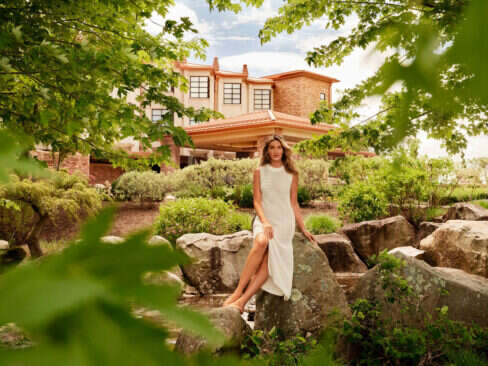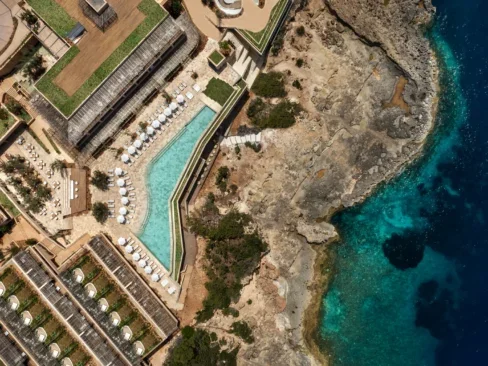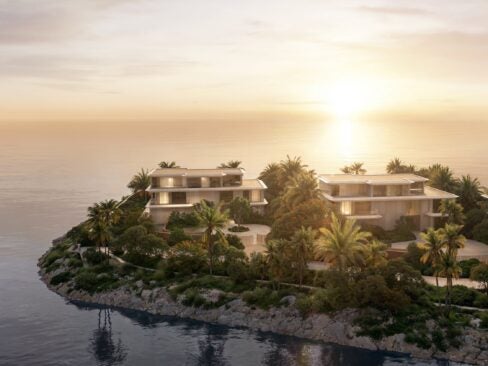I think there must be some kind of mistake. As wind and rain lash against the plane window from an angry sky, it looks like 10 hours in the air has not brought me to Panama City, but instead circled back to my home city of Glasgow in deepest darkest January.
It is in fact late June, and I am in the Central American capital, as the balmy temperature soon reminds me. I’m here for the night ahead of a four-day adventure at Islas Secas, a 100% solar-powered eco-resort immersed in coastal rainforest. But Islas Secas is not your typical luxury private island resort. In fact, it is not a private island resort at all; it is a private archipelago. Hosting some of the world’s most discerning travelers, the tropical playground encompasses 14 volcanic islands off Panama’s Pacific Coast in the Gulf of Chiriquí. It is overflowing with biodiversity: The latest species count includes over 128 plants, 15 reptiles, 114 birds, 750 fish and 12 mammals.
It also happens to be in the middle of the migratory path of humpback whales traveling thousands of miles from the Antarctic Peninsula. Prime whale-watching season is July to October, during which time the resort says you are “guaranteed” to see whales — a pretty bold claim. (A second season runs from December to April, when a smaller population visits from the Northern Hemisphere.) Though I am early, I am hopeful. And, thankfully, the rain will not dampen the whales’ spirits, so it will not dampen mine.
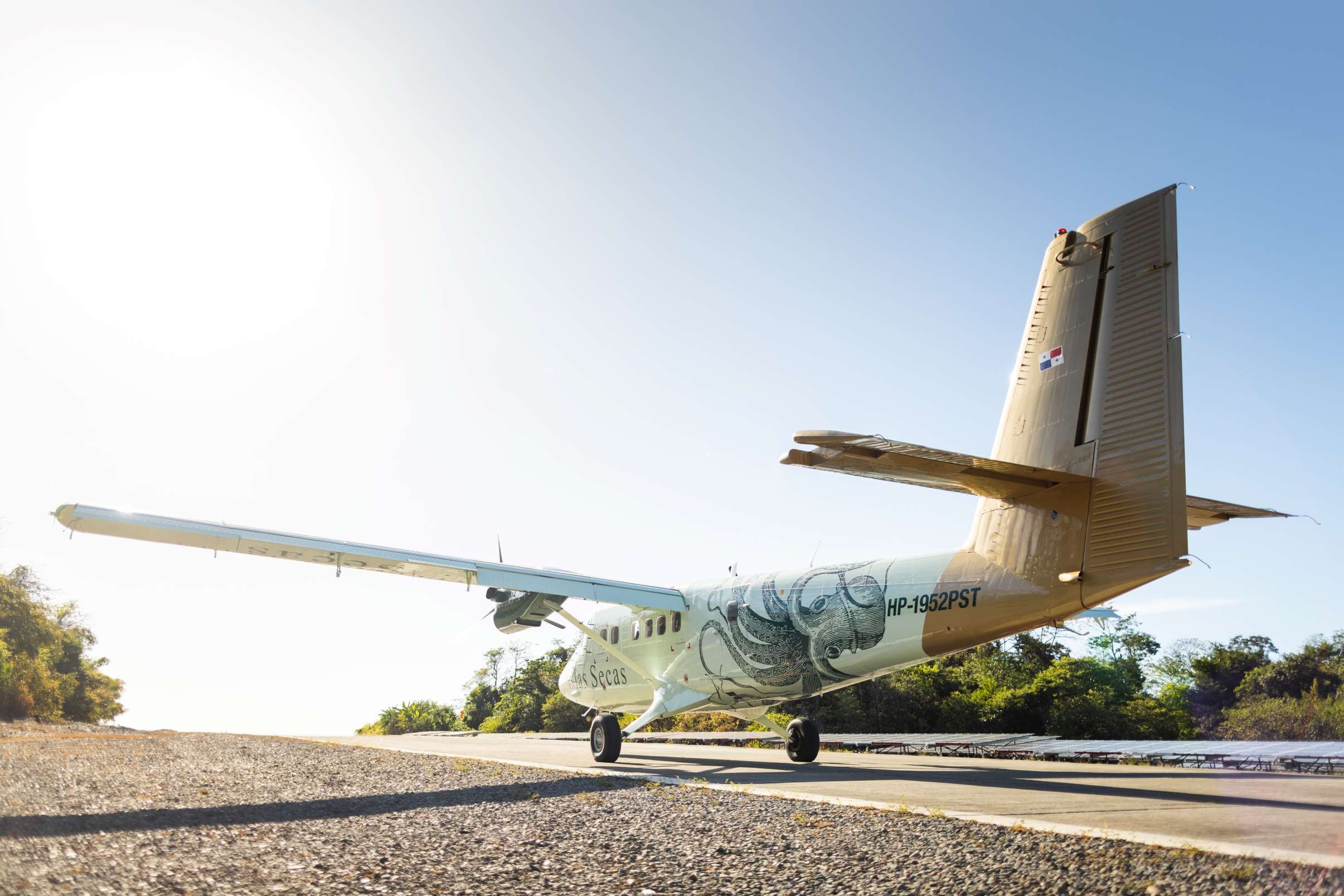
Day One
Prior to tomorrow morning’s flight to Islas Secas, I check in to the impeccably restored Hotel La Compañía in the center of Panama City’s colorful Old Town of Casco Antiguo. Spanning three historic buildings, the earliest dating from 1688, it is ideal for exploring the district’s terra-cotta-colored streets — followed by a restorative night’s sleep in a four-poster bed.
Day Two
Rain status: sporadic downpours — an improvement on yesterday. I board Islas Secas’ private Twin Otter plane to make the hour-long flight. Panoramas of the Panama Canal and The Bridge of the Americas soon surrender to canopy-draped landscapes. Islas Secas appears like a collection of 14 emeralds jutting up from the waves.
The only structure visible below is my home for the next three nights: the cliffside abode of Casa Cavada. Its sprawling roof is curved like a magnificent frigate bird, a native of this archipelago. Beside it is an enormous infinity pool peering over the Pacific.
Four-bedroom, six-bathroom Casa Cavada is Islas Secas’ newest and most extraordinary property, and I’m part of a small group to be among its first guests. It joins a collection of just seven existing luxurious casitas remotely interspersed amid the jungle of Isla Cavada — the largest of the 14 islands and where the resort itself is contained.
[See also: The Most Beautiful Wineries to Visit in Italy]
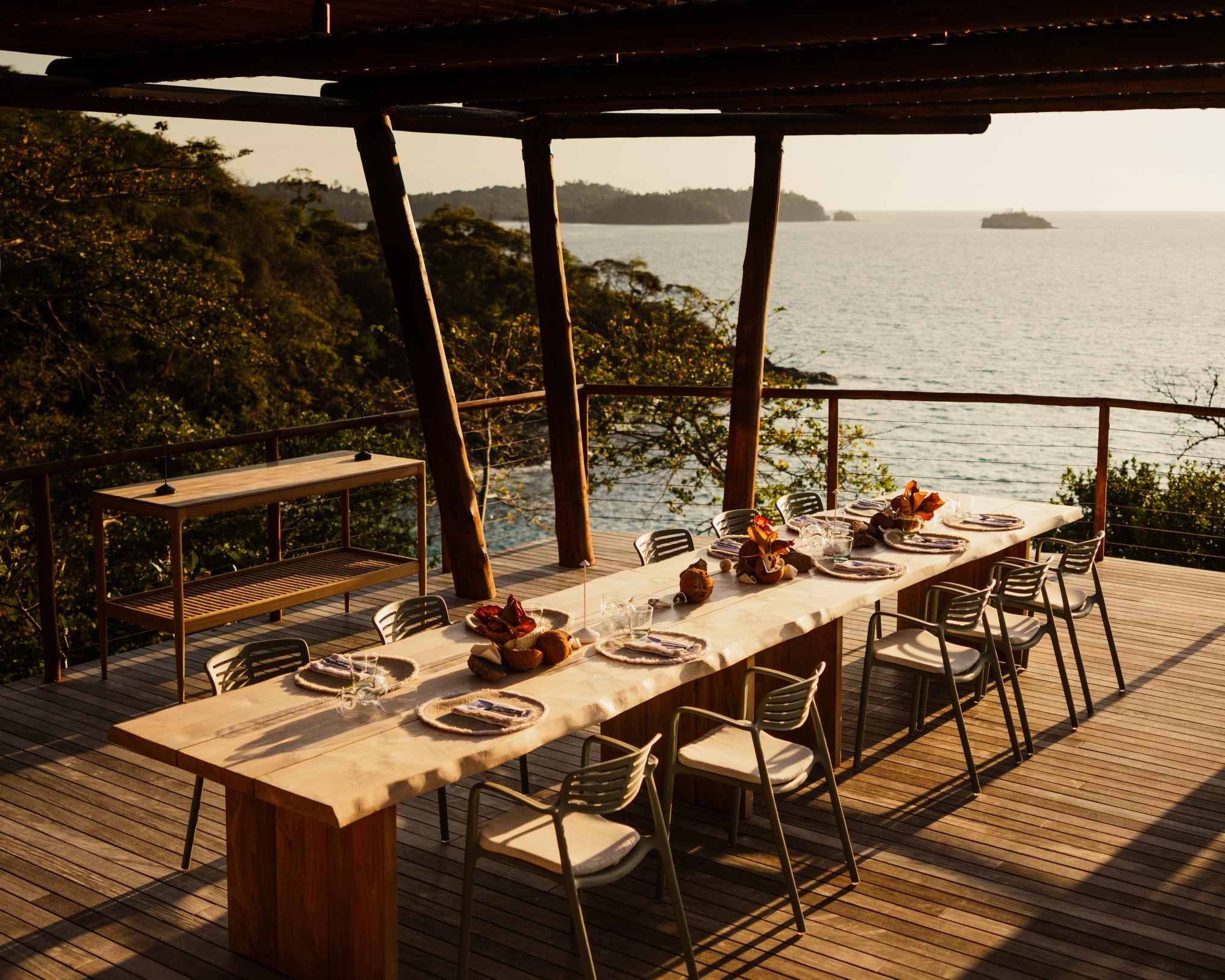
After touching down on the airstrip, a golf cart takes me down the house’s elongated driveway, where I am met by a remarkable structure formed from sustainable eucalyptus pillars that emerge from natural rock foundations.
At the heart of this 8,300-sq-ft, indoor-outdoor space is a living room with cathedral-like ceilings mirroring the towering palms outside and walled by retractable glass doors. These open onto a full-length, ocean-facing terrace complete with a Swarovski telescope (for whale sightings). To the left is a state-of-the-art chef’s kitchen and a triple-height covered walkway leading to the primary suite with separate lounge and outdoor shower. To the right: three more en-suite bedrooms with private terraces. I’m joined briefly on my terrace by a rainbow-hued rufous-tailed hummingbird.
I spend the evening in Casa Cavada’s enormous outdoor lava-stone grotto on the lower floor. Over expertly shaken tropical elixirs at the poolside bar, I gaze across what looks like the edge of the world and listen as the rainforest hum gives way to waves. With not another villa in sight, or anywhere near, it is like I have the archipelago to myself. The resort has long been a favorite of high-profile guests in search of a discreet and truly private getaway.
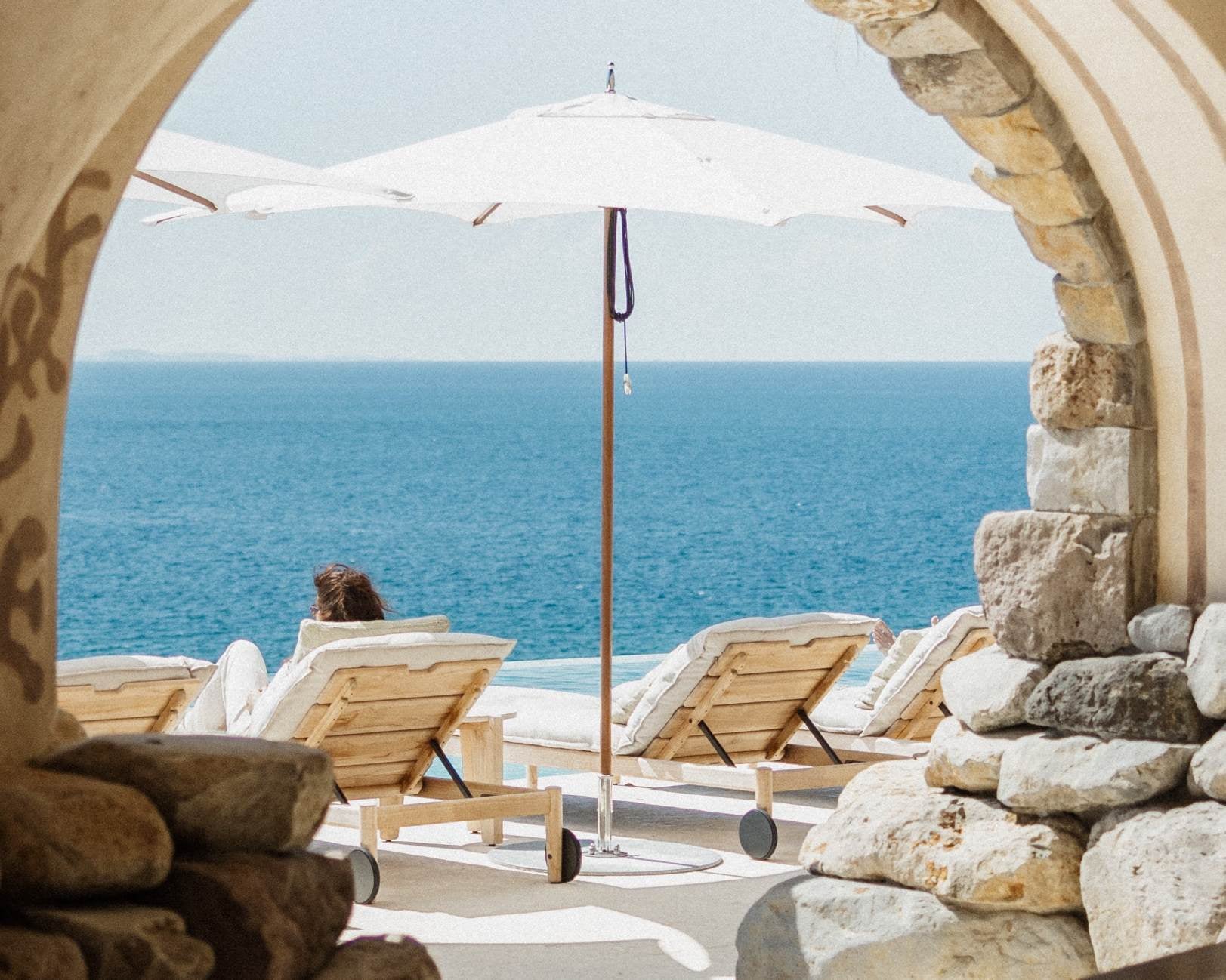
Day Three
The sun shines for my pre-breakfast outdoor yoga class with instructor Gabriela. Whether it’s daily yoga sessions, expert-led dives or the local cigars neatly arranged in a basket near the main bar accompanied by a glass of champagne, everything is included at this all-inclusive resort. After a Panamanian breakfast at the beachside restaurant, I am greeted by Beny, Islas Secas’ conservation and sustainability manager, and my guide for today’s marine safari around the archipelago. “Will we see whales?” I ask. “Hopefully,” he optimistically replies.
Imposing jewel-green waves rock the yacht’s helm after the previous day’s rainfall. Beny explains that the unusual shade is created by the water’s naturally high algae count. A blessing and curse, the diving visibility is perhaps not as clear as some coral reefs (though much clearer between December and March), but the nutrient-packed waters also attract an abundance of marine species. I will not be dipping my head under today — I’m here for two things: birds and whales.
Last year, the archipelago and its waters were given protected marine status, banning invasive fishing methods. “We’re already seeing hammerhead sharks in the area and many more snappers, bigger in size,” says Beny.
[See also: The Most Tranquil Hotels in Tuscany]

We arrive at the edge of Isla Coco. A nature reserve known for its bird population, the island hosts Panama’s second-largest colony of frigate birds. I count 20 white-headed juveniles nesting on the cliffside awaiting lunch.
Last year, researchers recorded the highest number of chicks since monitoring began — a positive indicator of ocean health. They share the island with a colony of brown boobies. On a neighboring island, four visiting blue-footed boobies with full bellies are perched on a rock. Beny points out their padded foreheads, which are used for their high-impact, rocket-like dives when they are fishing.
Just before we head landward, the tip of a large black-and-white tail rushes under the water — a humpback. After a 25-minute wait she reemerges, mightily shooting an air-powered fountain from the blowhole on her head. Within an hour of witnessing this natural wonder, I’m back on shore on a massage table at the spa for a holistic aromatherapy session using Islas Secas’ specially created essential oils.
That evening at Casa Cavada, we discussed the day’s sightings over a multi-course feast of steak and jumbo king prawns prepared by Islas Secas’ executive chef Carlos, who recently arrived after a five-month stint at Barcelona’s three-Michelin-star Disfrutar.
[See also: The Most Idyllic Hotels in Lake Como]
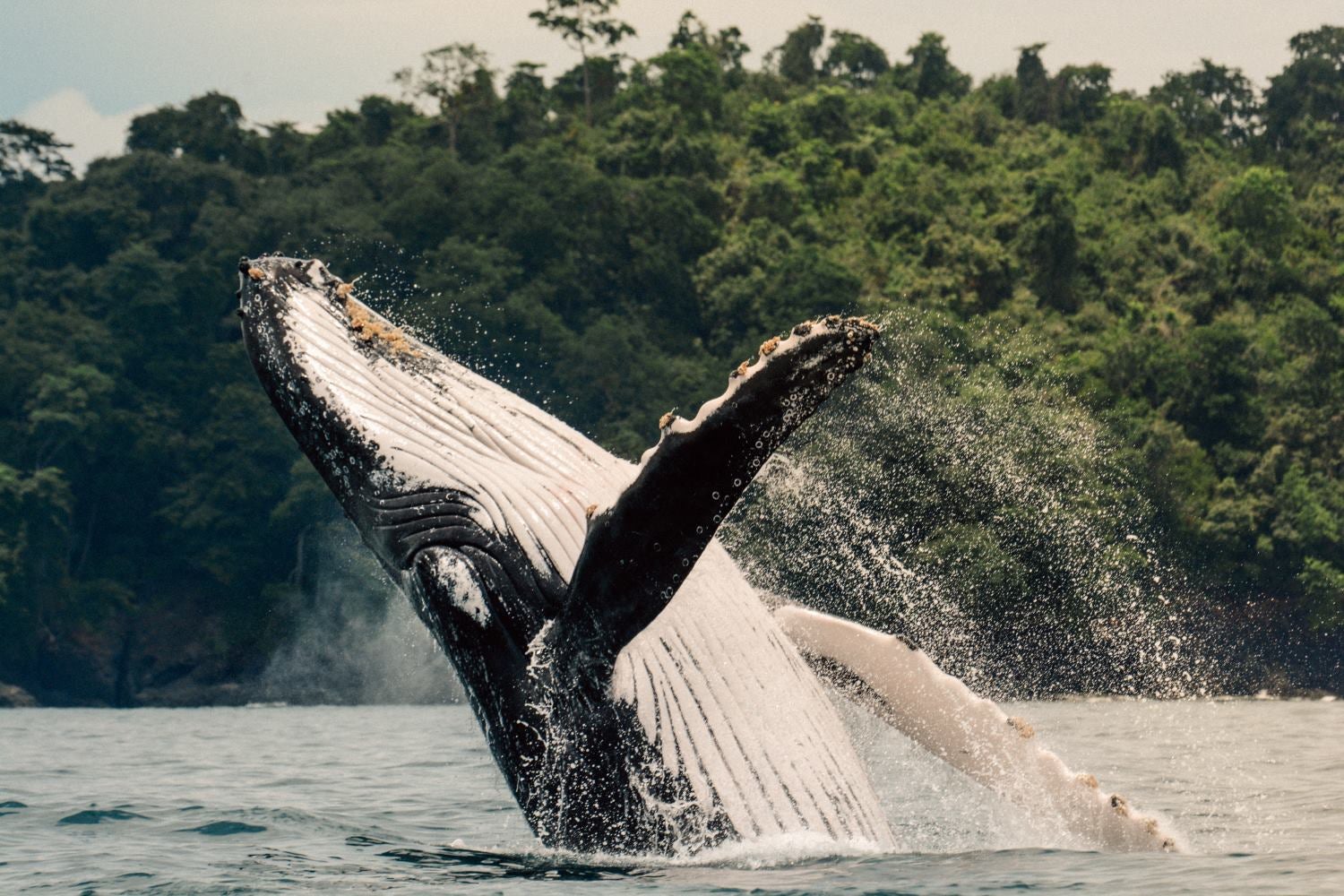
Day Four
Islas Secas’ rich and diverse fishing waters include tuna weighing up to 1,000 lbs — making them a huge draw. I’m a rookie but decided to give it a go. Traveling to the archipelago’s westerly islands, we see dolphins and a green sea turtle riding the waves. Despite a mid-journey torrential downpour, it’s a success. We all reel in snappers while another in the group catches a striking-looking roosterfish — relatively petite at 25 lbs and about 3ft long (it was returned to the water).
Lunch is barbecued lobster on the sands of Isla Pargo. Chef Carlos joins us for a ceviche cooking class using finely diced snapper, fresh lime and mangos. With temperatures peaking, we make the most of sunbathing and snorkeling, swimming alongside schools of colorful reef fish.
Though I’m not a natural in the water, even I’m tempted by Islas Secas’ high-tech water sports. After a briefing courtesy of instructor Fabio and with goggles firmly on, I start with the Seabob, which is shaped like a little submarine with handles. An underwater jet propels me along and below the surface. Next, I try my hand at the E-foil, an electronic hydrofoil surfboard that swiftly elevates you above the waves thanks to its rotating underwater wing. Sadly, this takes a lot more skill, and after a number of comedic falls, I call it a day. Adrenaline levels are soon reset with a sunset sound bath on Casa Cavada’s terrace.
[See also: The Best Luxury Hotels in San Francisco]
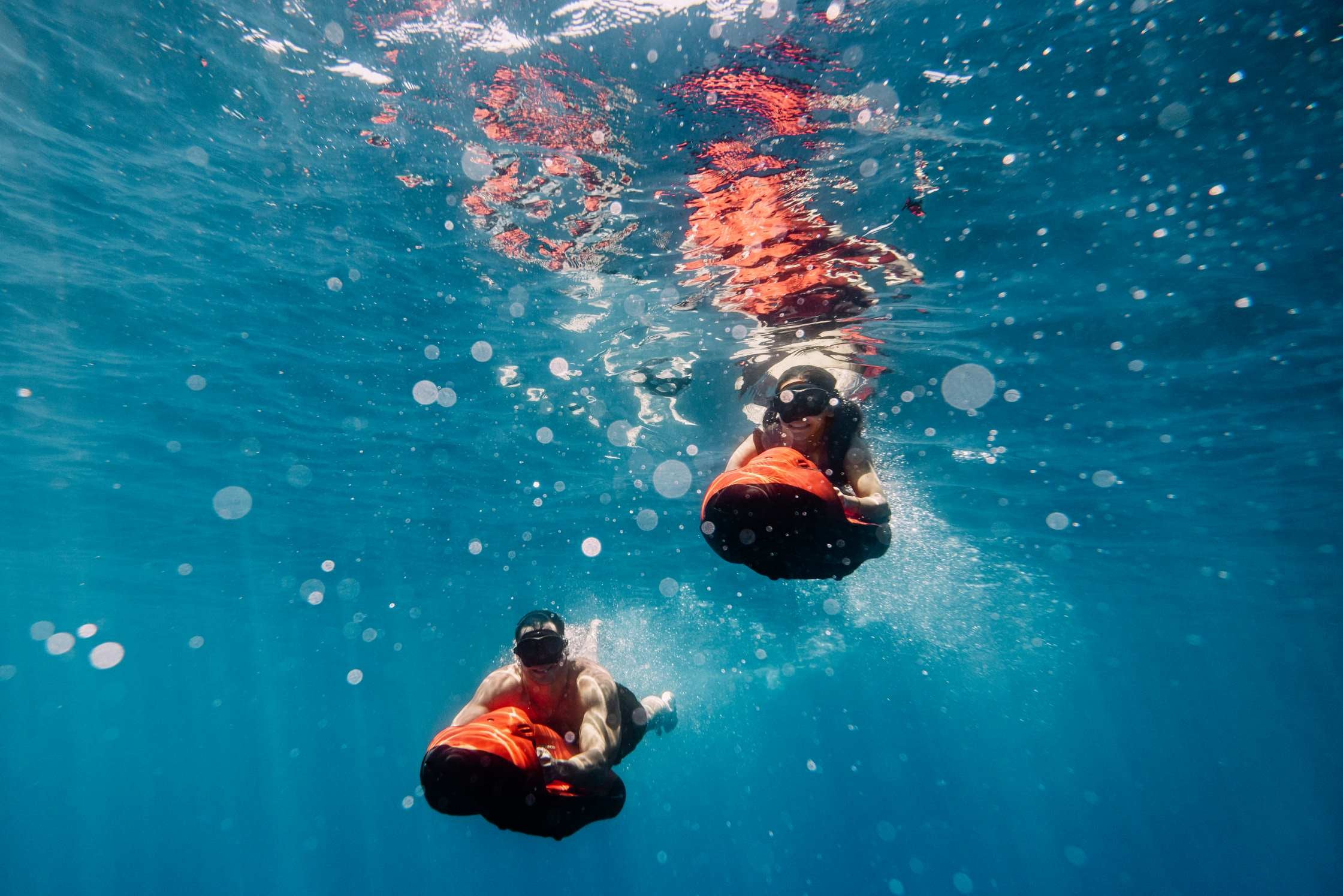
Day Five
It is a good omen. Ahead of my early birdwatching tour, I make my first sighting when a black hawk livens up my morning coffee in the garden. I join Fabio — also an expert nature guide — as we immerse ourselves in Isla Cavada’s forests. The birds (and the iguanas) are out in full force. Within the first half hour, I have spotted a tiny bananaquit with a plump yellow breast drawing nectar from the flowers of a coconut palm; a northern scrub flycatcher with a perfectly coifed mohawk; a steely hued blue-gray tanager bouncing along the branches; and a singing yellow mangrove warbler with a reddish-brown head.
We follow a trail towards the somewhat suitably named Playa Pelicano beach to attempt to tick the brown pelican off the list. I descend towards a beach straight out of Robinson Crusoe, with thick rainforest backing its deserted sands — so deserted, even the pelicans are gone. It’s somewhere you could easily while away the hours in complete solitude.
While packing my suitcase, I’m called to the front terrace by shouts of “Whales!” My final few moments at Casa Cavada are spent in the garden overlooking the Pacific as I fix my eyes on three humpback whales swimming near the shore, rising and falling beneath the surface.
Casa Cavada from $20,000 per night for a three-night minimum stay; island buyout from $50,000 per night for a three-night minimum stay.
info@islassecas.com, +1 800 377 8877








